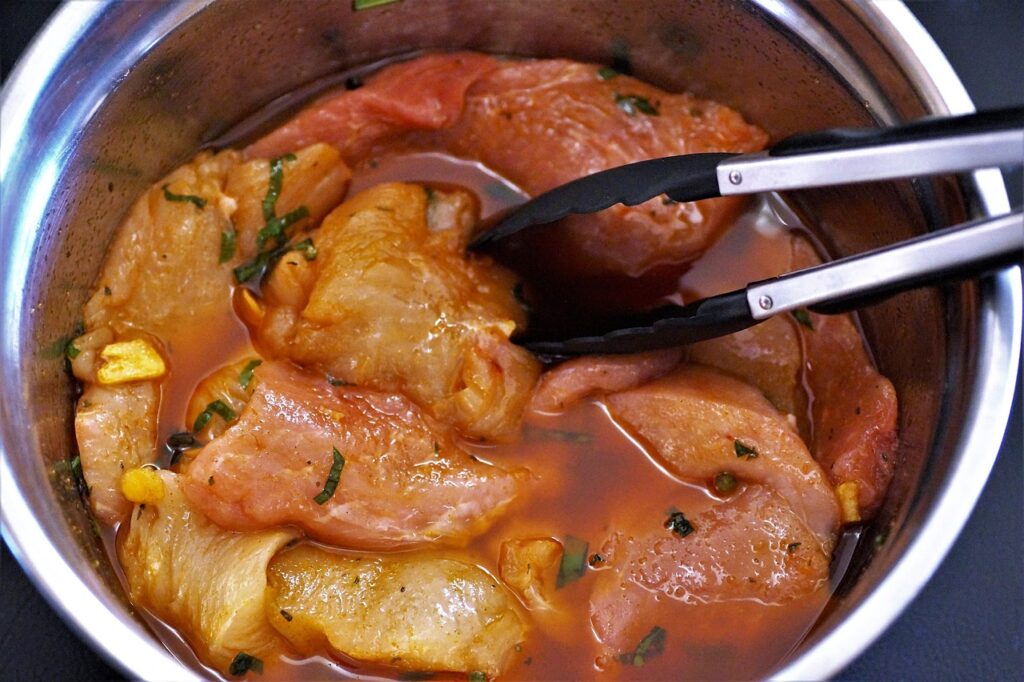
Are you planning to cook a delicious turkey but feeling a bit overwhelmed? Look no further! In this article, you will find some handy cooking tips for preparing a mouthwatering turkey. From selecting the perfect bird to achieving a golden, crispy skin, these tips will help you create a Thanksgiving masterpiece that will delight your family and friends. Get ready to impress everyone with your culinary skills and make this year’s turkey the star of the show!
Choosing the Right Turkey
When it comes to choosing the perfect turkey for your Thanksgiving feast, there are a few factors to consider. The first decision to make is whether you want a fresh or frozen turkey. Fresh turkeys tend to be juicier and have a slightly better texture, but they require more preparation time and can be more expensive. On the other hand, frozen turkeys are more readily available, can be purchased in advance, and are usually more affordable. Ultimately, the choice between fresh and frozen turkey comes down to personal preference and convenience.
The size of your turkey is another crucial consideration. The general rule of thumb is to allow 1 pound of turkey per person. However, if you want leftovers or have hearty eaters, you might want to adjust that to 1.5 pounds per person. It’s also vital to ensure that your turkey will fit in your oven or grill comfortably. Keep in mind that larger turkeys may require longer cooking times, so plan accordingly.
When it comes to choosing between organic or conventional turkey, it’s important to consider your values and the quality of the meat. Organic turkeys are raised without antibiotics or hormones and are fed organic feed. They tend to have a more natural flavor and are a great option for those who prioritize organic food. On the other hand, conventional turkeys are typically more widely available, and if you’re not concerned about the organic label, they can still be delicious and satisfying.
Some people also face the decision of whether to choose a kosher or brined turkey. Kosher turkeys are processed according to Jewish dietary laws and are salted, but not brined. They tend to be flavorful and juicy. On the other hand, brined turkeys are soaked in a saltwater solution, which adds flavor and helps to keep them moist. The choice between kosher and brined turkey ultimately comes down to personal preference and any dietary restrictions you may have.
Preparation and Seasoning
Preparing your turkey correctly is crucial for a delicious end result. If you have a frozen turkey, it’s essential to thaw it properly before cooking. Thawing in the refrigerator is the safest method and should be done at a rate of 24 hours for every 4-5 pounds of turkey. Make sure to remove the giblets from the turkey’s cavities before cooking. These include the neck, liver, heart, and gizzard.
When it comes to seasoning your turkey, you have the option of either brining or using a dry rub. Brining involves soaking the turkey in a saltwater solution, which helps to enhance flavor and keep the meat moist. On the other hand, a dry rub consists of a mixture of herbs, spices, and seasonings that are applied directly to the bird’s surface. Both methods can yield delicious results, so it’s a matter of personal preference.

Cooking Methods
There are several cooking methods to choose from when it comes to preparing your turkey. The most traditional method is roasting, which involves cooking the turkey in the oven. This method provides even cooking and results in a crispy skin and tender meat. Another popular option is grilling, which imparts a delicious smoky flavor to the turkey. Grilling is a great choice if you want to free up oven space or prefer a unique flavor profile. Deep frying is another technique that yields a moist and flavorful turkey with a crispy skin. Finally, for those looking to try something different, spatchcocking involves removing the backbone of the turkey and flattening it to cook it evenly and quickly.
Roasting Tips
When roasting a turkey, there are a few tips to ensure a delicious and juicy end result. Preheating the oven is essential to promote even cooking and proper browning. Seasoning the skin of the turkey with salt, pepper, and any desired herbs or spices will enhance the flavor. Using a roasting rack allows the air to circulate around the turkey, resulting in a crispy skin all around. Basting the turkey with pan juices or butter throughout cooking helps to keep it moist and flavorful. Finally, using foil or a roasting bag can help to prevent the skin from becoming too dark or dry.

Grilling Tips
Grilling a turkey adds a unique flavor and can be an exciting alternative to traditional cooking methods. Before grilling, it’s essential to prepare the grill by cleaning the grates and oiling them to prevent sticking. To create indirect heat, only light the burners on one side of the grill and place the turkey on the opposite side. Soaking wood chips in water and adding them to the grill can add a delicious smoky flavor to the turkey. Using a meat thermometer to ensure the turkey reaches a safe internal temperature is crucial. Grilling time and temperature may vary, so it’s important to consult a reliable recipe or use a meat thermometer for accurate results.
Deep Frying Tips
Deep frying a turkey results in a moist and flavorful bird with a crispy skin. When choosing a fryer, it’s essential to select one that is large enough to accommodate your turkey and has safety features such as a thermostat and an insulated handle. Before frying, ensure that the turkey is completely dry and free of any excess moisture. The oil should be heated to the recommended temperature according to the fryer’s instructions. Frying time will vary depending on the size of the turkey, so it’s important to follow a reliable recipe or guideline. Safety precautions, such as frying outdoors on a flat surface away from buildings, are essential to prevent accidents. After frying, allow the turkey to rest for a few minutes before carving to retain its juices.

Spatchcocking Tips
Spatchcocking is a unique cooking technique that involves removing the backbone of the turkey and flattening it to promote even cooking and shorter cooking times. To spatchcock a turkey, use kitchen shears or a sharp knife to cut along both sides of the backbone and remove it. Press down on the breastbone to flatten the turkey. Preparing the turkey for spatchcocking is similar to other cooking methods: removing the giblets and seasoning the bird. The cooking time and temperature will vary depending on the size of the turkey, so it’s essential to use a meat thermometer to ensure it reaches a safe internal temperature. The benefits of spatchcocking include faster cooking times, even browning, and juicy meat. Carving a spatchcocked turkey is similar to carving a traditional turkey.
Cooking Time and Temperature
Cooking your turkey to the correct internal temperature is vital to ensure it is safe to eat and delicious. The USDA recommends cooking turkey to an internal temperature of 165°F/74°C in the thickest part of the thigh, breast, and stuffing. It’s essential to use a reliable meat thermometer to check the temperature accurately. The cooking time will depend on the size of the turkey and the cooking method you choose. To calculate the cooking time, use the recommended minutes per pound provided by a trusted recipe or cooking guide.
Turkey Carving Tips
After your turkey is cooked, it’s important to let it rest for about 15-20 minutes. This allows the juices to redistribute, creating a more tender and flavorful bird. To carve the turkey, start by removing the legs and wings. Then, carefully slice the breast meat against the grain into thin, even slices. For a beautiful presentation, arrange the meat on a serving platter and garnish with fresh herbs or citrus slices. Don’t forget to save the bones and carcass for making a flavorful turkey stock or soup!
Leftover Turkey Ideas
If you find yourself with leftover turkey after Thanksgiving, don’t worry! There are plenty of delicious ways to enjoy it in the days to come. One option is to make a comforting turkey soup by simmering the bones and leftover meat with vegetables and herbs. Another delicious idea is to create turkey sandwiches with your favorite condiments and fresh bread. For a more substantial meal, turkey pot pie is a great option. Combine leftover turkey with vegetables, gravy, and a buttery crust for a hearty and satisfying dish. If you’re craving some spice, turkey enchiladas are a fantastic way to use up leftovers. Finally, a light and refreshing turkey salad, made with leftover turkey, greens, and your favorite dressing, is a great option for a quick and healthy meal.
With these tips and ideas, you’re well-equipped to choose, prepare, and cook the perfect turkey for your Thanksgiving feast. Whether you prefer the traditional roasting method or want to try something new like grilling or spatchcocking, the most important thing is to enjoy the process and share a delicious meal with loved ones. Happy cooking and happy Thanksgiving!
